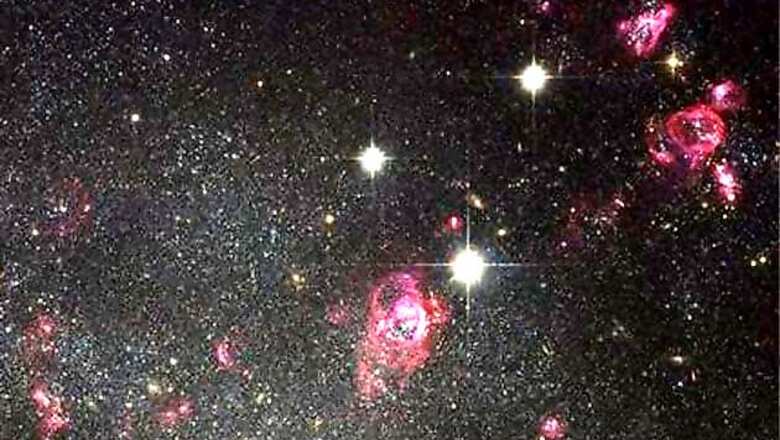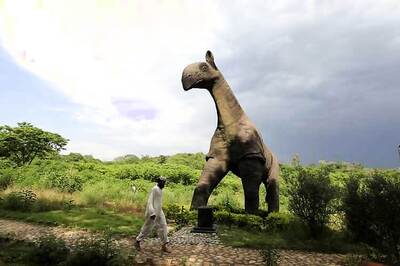
views
Washington: Is Big Bang a myth? The universe was created from the debris ejected when a star collapsed into a black hole - a theory that can explain why the cosmos seems to be so uniform in all directions, scientists say.
The standard Big Bang model tells us that the Universe exploded out of an infinitely dense point, or singularity. But it is not known what triggered this outburst. It is also difficult to explain how a violent Big Bang would have left behind a Universe that has an almost completely uniform temperature, because there does not seem to have been enough time since the birth of the cosmos for it to have reached temperature equilibrium.
Astrophysicists from the Perimeter Institute for Theoretical Physics in Waterloo, Canada have released a paper focusing on a proposal made in 2000 by a team including Gia Dvali, a physicist now at the Ludwig Maximilians University in Munich, Germany, 'Nature.com' reported. In that model, our three-dimensional (3D) Universe is a membrane, or brane, that floats through a 'bulk universe' that has four spatial dimensions.
The team realised that if the bulk universe contained its own four-dimensional (4D) stars, some of them could collapse, forming 4D black holes in the same way that massive stars in our Universe do: they explode as supernovae, violently ejecting their outer layers, while their inner layers collapse into a black hole.
In our Universe, a black hole is bounded by a spherical surface called an event horizon. Whereas in ordinary three-dimensional space it takes a two-dimensional object (a surface) to create a boundary inside a black hole, in the bulk universe the event horizon of a 4D black hole would be a 3D object - a shape called a hypersphere.
When researchers modelled the death of a 4D star, they found that the ejected material would form a 3D brane surrounding that 3D event horizon, and slowly expand. The authors speculate that the 3D Universe we live in might be just such a brane - and that we detect the brane's growth as cosmic expansion.
"Astronomers measured that expansion and extrapolated back that the Universe must have begun with a Big Bang - but that is just a mirage," said astrophysicist Niayesh Afshordi. The new theory has some problems, however. Earlier this year, the European Space Agency's Planck space observatory released data that mapped the slight temperature fluctuations in the cosmic microwave background the relic radiation that carries imprints of the Universe's early moments.
The observed patterns matched predictions made by the standard Big Bang model and inflation, but the black-hole model deviates from Planck's observations by about 4 per cent.




















Comments
0 comment